
Discover the Timeless Charm of Natchez National Historical Park
Explore Natchez National Historical Park: A Journey Through Antebellum Estates, African American Heritage, and Colonial History in Mississippi.
Nestled in the heart of Mississippi, Natchez National Historical Park offers a captivating journey through time. This park is a treasure trove of American history, showcasing the rich cultural tapestry of the South. Visitors can explore three key sites: Melrose Estate, the William Johnson House, and Fort Rosalie. Each location provides a unique glimpse into the past, from antebellum grandeur to the everyday life of a free African American in the 19th century. The Melrose Estate is a stunning example of Greek Revival architecture, complete with beautifully preserved interiors and lush gardens. Guided tours reveal fascinating stories about the lives of the people who lived and worked there. The William Johnson House, once home to a successful African American barber, offers insight into the complexities of race and society during Johnson's lifetime. Finally, the Fort Rosalie site, currently under development, promises to shed light on the early colonial history of Natchez. Natchez National Historical Park is more than just a collection of historic sites; it is a living museum that brings to life the diverse experiences of those who shaped the region. Whether you are a history enthusiast or simply looking for a picturesque spot to explore, Natchez National Historical Park is a must-visit destination that will leave you with a deeper appreciation for America's past.
Local tips in Natchez National Historical Park
- Visit Melrose Estate early in the day to avoid crowds and enjoy the serene gardens in the morning light.
- Don't miss the guided tours at both Melrose Estate and the William Johnson House for an enriched experience.
- Check the park's calendar for special events and programs, which often include living history demonstrations and lectures.
- Wear comfortable shoes, as there is a lot of walking involved when exploring the park's various sites.
- Bring a picnic and enjoy it in the scenic surroundings of the Melrose Estate gardens.
- Visit the Natchez Visitor Center for additional historical context and maps of the area.
Discover the Timeless Charm of Natchez National Historical Park
Nestled in the heart of Mississippi, Natchez National Historical Park offers a captivating journey through time. This park is a treasure trove of American history, showcasing the rich cultural tapestry of the South. Visitors can explore three key sites: Melrose Estate, the William Johnson House, and Fort Rosalie. Each location provides a unique glimpse into the past, from antebellum grandeur to the everyday life of a free African American in the 19th century. The Melrose Estate is a stunning example of Greek Revival architecture, complete with beautifully preserved interiors and lush gardens. Guided tours reveal fascinating stories about the lives of the people who lived and worked there. The William Johnson House, once home to a successful African American barber, offers insight into the complexities of race and society during Johnson's lifetime. Finally, the Fort Rosalie site, currently under development, promises to shed light on the early colonial history of Natchez. Natchez National Historical Park is more than just a collection of historic sites; it is a living museum that brings to life the diverse experiences of those who shaped the region. Whether you are a history enthusiast or simply looking for a picturesque spot to explore, Natchez National Historical Park is a must-visit destination that will leave you with a deeper appreciation for America's past.
When is the best time to go to Natchez National Historical Park?
Iconic landmarks you can’t miss
Emerald Mound
Explore Emerald Mound in Natchez, MS - a stunning historical landmark representing ancient Native American earthworks and rich cultural heritage.

Natchez State Park
Explore the serene landscapes, hiking trails, and rich wildlife of Natchez State Park, a premier destination for nature lovers in Mississippi.
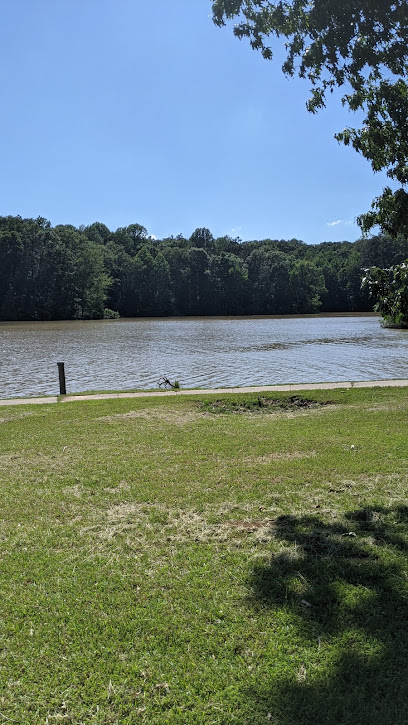
Natchez National Historical Park - Visitor Center
Discover Natchez National Historical Park - Visitor Center for a deep dive into the rich history and culture of Natchez, Mississippi.
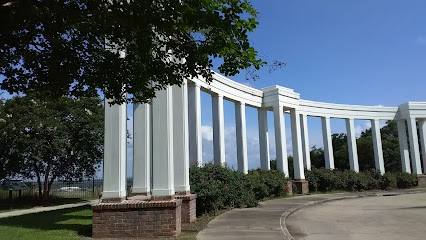
Melrose
Discover the elegance of Melrose, a historic antebellum mansion in Natchez, Mississippi, showcasing rich history and stunning architecture.
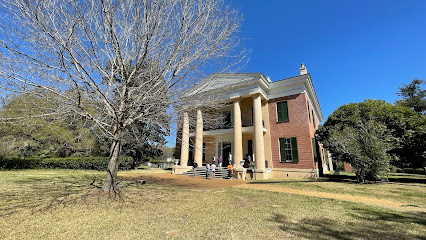
House On Ellicott's Hill
Explore the historic House On Ellicott's Hill in Natchez, Mississippi, where rich history meets stunning architecture and beautiful gardens.
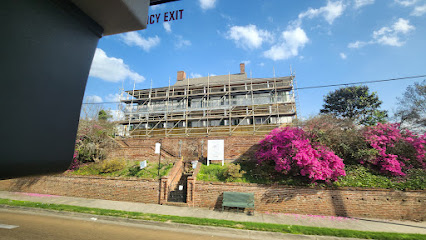
Arlington (Natchez, Mississippi)
Explore Arlington, a breathtaking historical landmark in Natchez, Mississippi, showcasing antebellum architecture and rich Southern heritage.
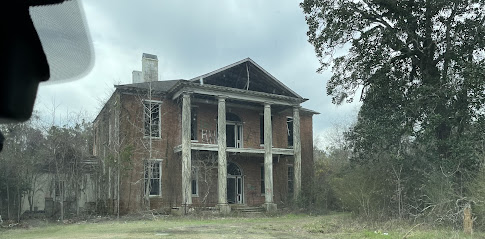
Stable
Explore the Melrose Mansion in Natchez, Mississippi, a stunning museum showcasing antebellum architecture and rich historical narratives.
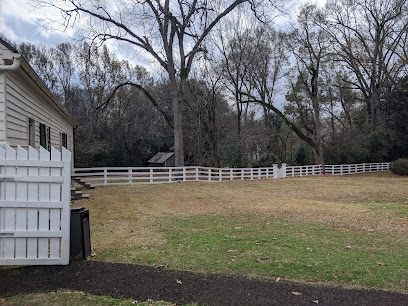
Unmissable attractions to see
Cypress Swamp
Explore the serene Cypress Swamp in Mississippi, an enchanting park rich in wildlife and natural beauty perfect for hiking and outdoor adventures.
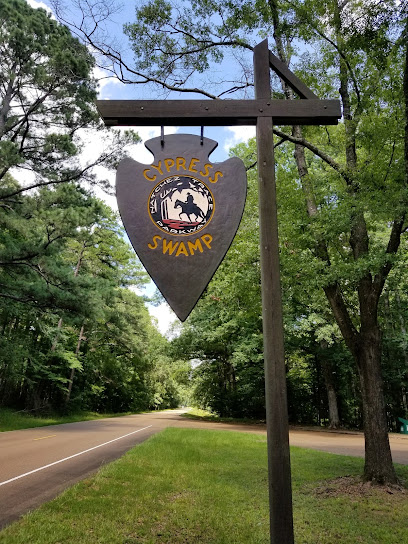
Natchez Trace Parkway Visitor Center
Explore the rich history and natural beauty of Mississippi at the Natchez Trace Parkway Visitor Center, your gateway to adventure.
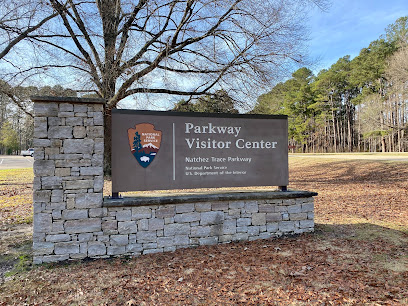
Grand Village of the Natchez Indians
Explore the Grand Village of the Natchez Indians, where history and culture intertwine to celebrate Mississippi's Native American heritage.
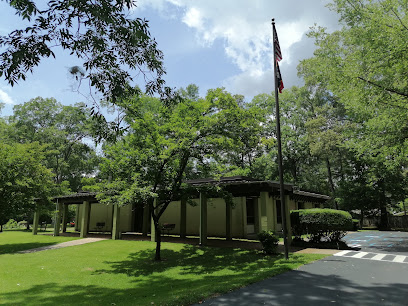
Emerald Mound
Uncover the rich history and breathtaking views at Emerald Mound, Mississippi's majestic ceremonial mound and a significant Native American landmark.
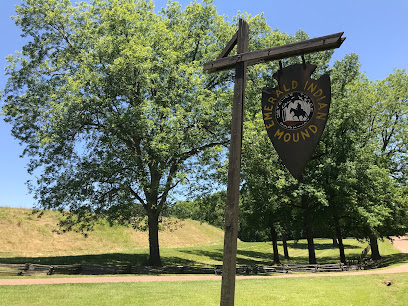
Natchez State Park
Explore the serenity and natural beauty of Natchez State Park, a perfect escape for outdoor enthusiasts and families in Mississippi.
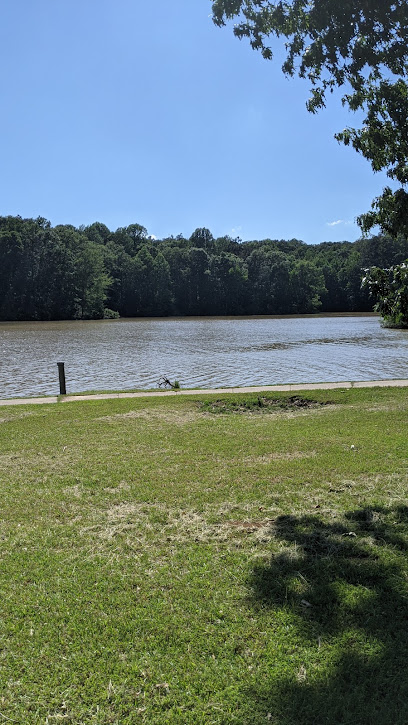
Forks of the Road
Explore the historical significance of Forks of the Road, a poignant landmark in Natchez, Mississippi, revealing stories from America's past.

Natchez National Historical Park - Visitor Center
Discover the gateway to Natchez's rich history at the Natchez National Historical Park Visitor Center, your first step to exploring this iconic Southern city.
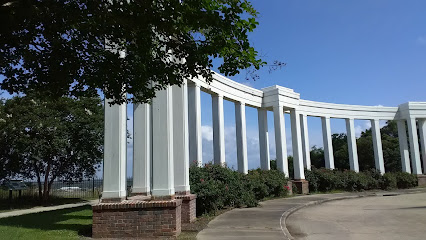
The Towers of Natchez
Explore the elegance and rich history of The Towers of Natchez, a charming bed and breakfast and historical landmark in Mississippi.
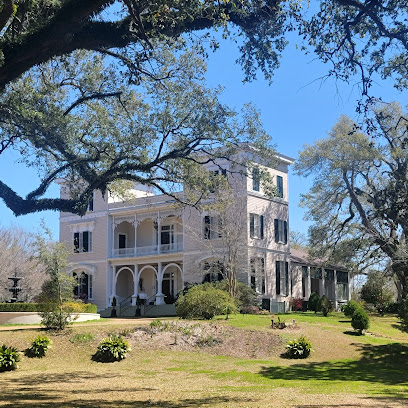
Melrose
Discover Melrose, a historical jewel in Natchez, Mississippi, reflecting the splendor of antebellum architecture and Southern heritage.
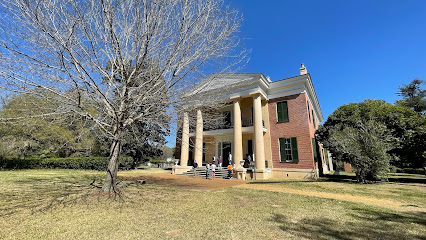
Owens Creek Waterfall
Explore the enchanting Owens Creek Waterfall on the Natchez Trace Parkway, a serene retreat showcasing Mississippi's natural beauty and tranquility.
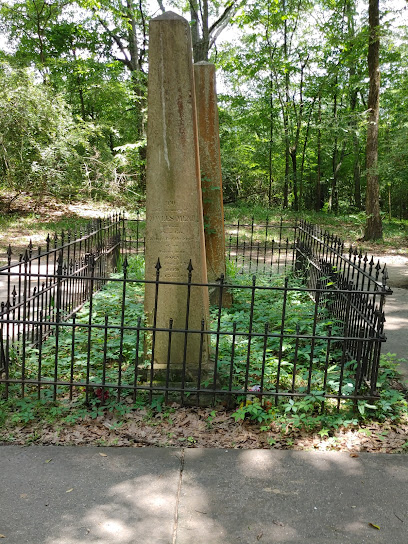
Natchez Visitor Reception Center
Explore the Natchez Visitor Reception Center and immerse yourself in the history and culture of Natchez, Mississippi's picturesque town.

Mount Locust Information Center
Explore Natchez's rich history and natural beauty at Mount Locust Information Center, your gateway to the Natchez Trace Parkway.

Old Trace Exhibit Shelter
Discover the historical significance of the Natchez Trace at the Old Trace Exhibit Shelter; a perfect blend of education and natural beauty awaits you.
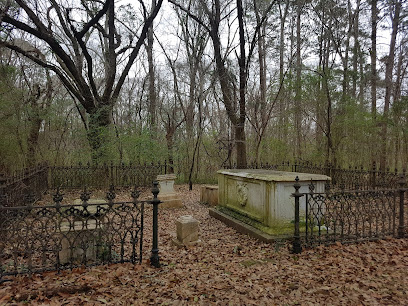
Essential places to dine
Roux 61
Experience exquisite seafood and steak at Roux 61 in Natchez - where Southern hospitality meets culinary excellence.
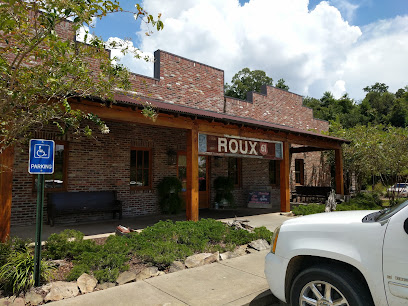
Monmouth Historic Inn & Gardens
Experience the elegance of history at Monmouth Historic Inn & Gardens—where timeless beauty meets southern hospitality.
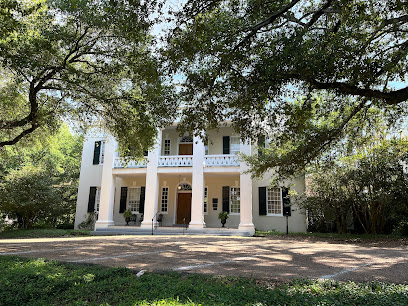
Mammy's Cupboard
Discover Mammy's Cupboard in Natchez, Mississippi - where classic Southern flavors meet iconic Americana in an unforgettable dining experience.
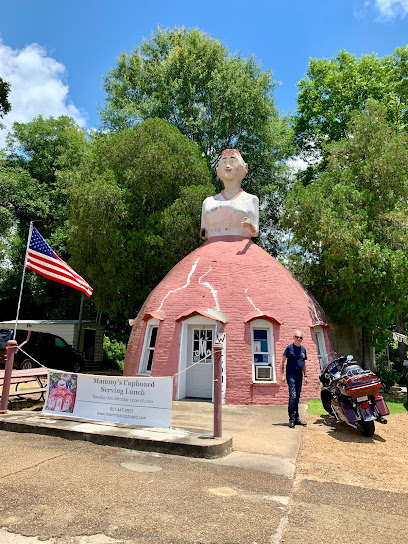
Castle Restaurant & Pub
Experience fine Southern dining at Castle Restaurant & Pub in Natchez—where history meets culinary excellence along the Mississippi River.
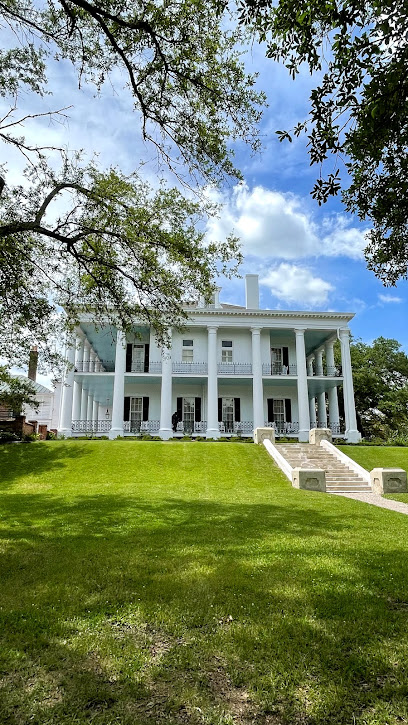
Restaurant 1818
Experience the essence of American cuisine at Restaurant 1818 in Natchez - where every dish tells a story.
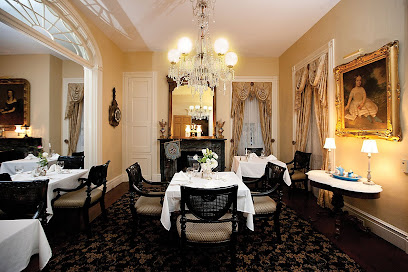
Markets, malls and hidden boutiques
Natchez National Historical Park
Discover the antebellum charm and rich history of Natchez National Historical Park in Mississippi, a captivating destination for history buffs and nature lovers.
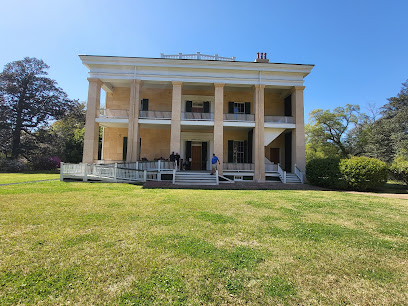
Natchez National Historical Park - Visitor Center
Discover the historical treasures of Natchez at the National Historical Park Visitor Center, where culture and heritage come alive.
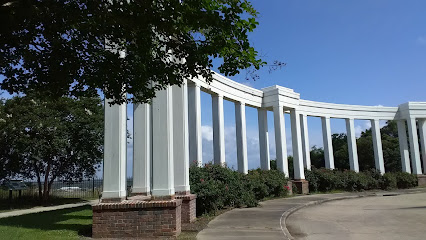
Silver Street Gallery & Gifts
Explore Silver Street Gallery & Gifts in Natchez for unique local art and perfect souvenirs that capture the essence of Mississippi.
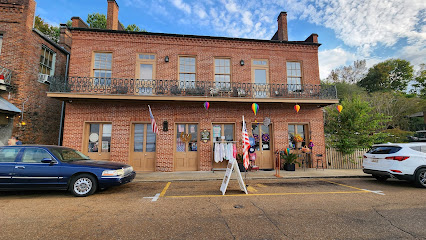
Mount Locust Information Center
Explore the historical and natural beauty of Natchez, MS at Mount Locust Information Center, a gateway to the Natchez Trace Parkway.
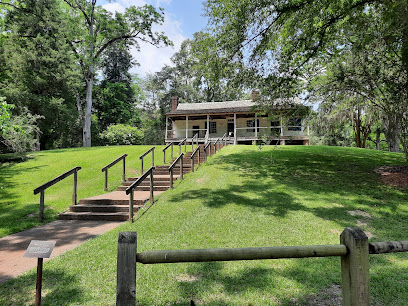
One of A Kind
Discover unique gifts and local treasures at One of A Kind in Natchez, Mississippi—a must-visit for every traveler seeking authentic souvenirs.
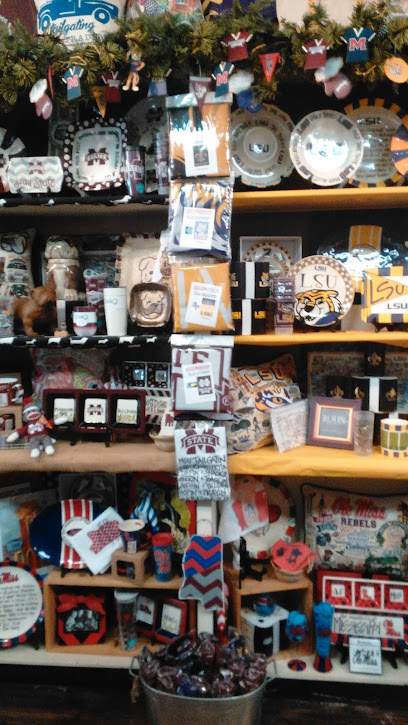
Attic Treasures Old & New
Explore Attic Treasures Old & New in Natchez, MS for a unique antique shopping experience filled with vintage finds and rich history.
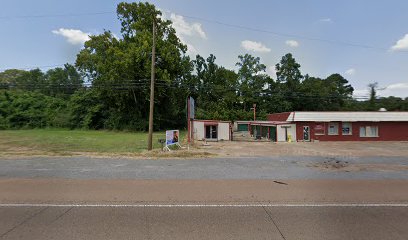
Eastern National Park Store
Discover literature, local history, and park memorabilia at the Eastern National Park Store in Natchez, Mississippi.
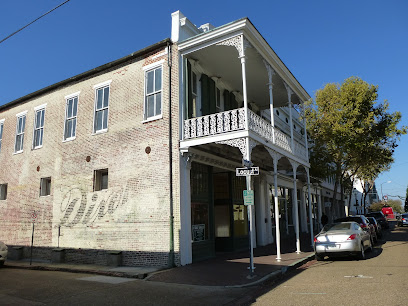
Natchez Unique
Explore Natchez Unique for a charming selection of local crafts, gifts, and souvenirs in the heart of Natchez, Mississippi.
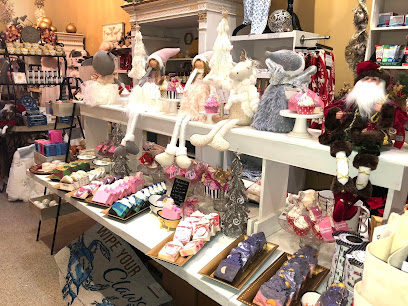
Essential bars & hidden hideouts
Magnolia Grill
Experience the best seafood and Cajun cuisine in Natchez at Magnolia Grill, where fresh ingredients meet Southern hospitality.
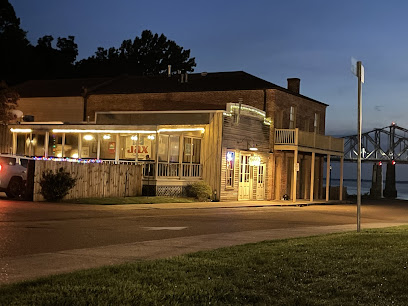
The Camp Restaurant
Experience authentic Southern cuisine and vibrant social atmosphere at The Camp Restaurant in Natchez, Mississippi.
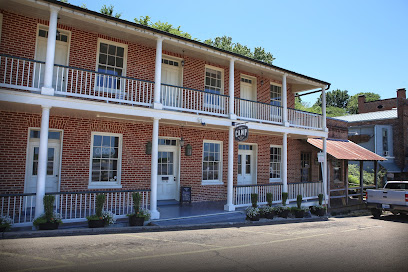
Applebee's Grill + Bar
Experience the heart of American dining at Applebee's Grill + Bar in Natchez, where comfort food meets a family-friendly atmosphere.
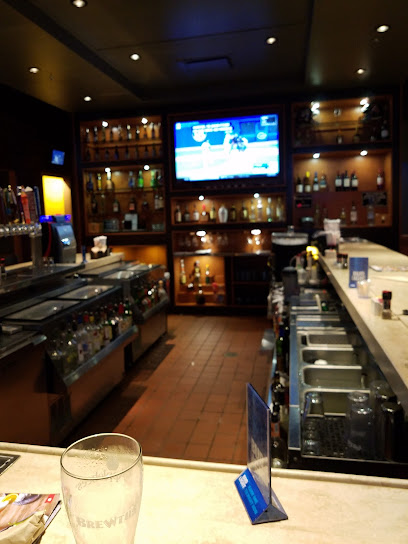
Under-the-Hill Saloon
Discover the vibrant atmosphere and rich history of Under-the-Hill Saloon, the perfect bar to unwind in Natchez, Mississippi.
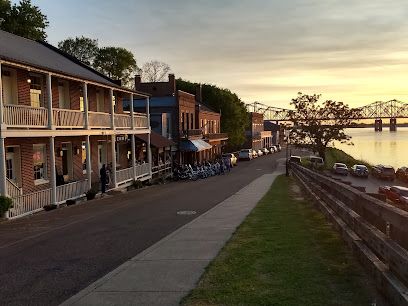
Biscuits & Blues
Experience the heart of Natchez at Biscuits & Blues, where American cuisine meets live blues music for an unforgettable dining adventure.
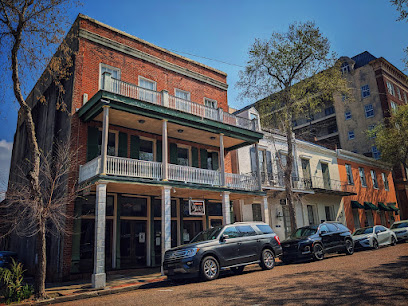
Pearl Street Pasta
Savor the essence of Italy in Natchez at Pearl Street Pasta, where homemade pasta and warm hospitality await.
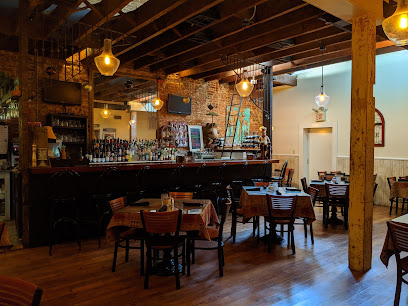
Monmouth Historic Inn & Gardens
Explore the elegant Monmouth Historic Inn & Gardens, a historical landmark in Natchez, Mississippi, offering fine dining, stunning gardens, and rich Southern heritage.
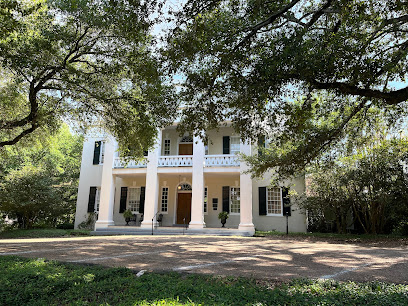
Dunleith Historic Inn
Discover the charm of the South at Dunleith Historic Inn, a beautifully restored antebellum mansion in Natchez, Mississippi.
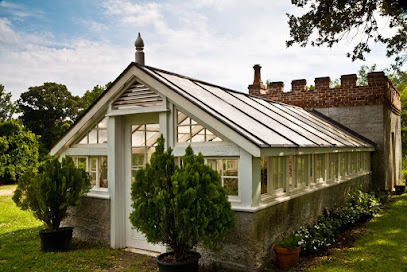
Smoot's Grocery Blues Lounge
Discover the soulful vibe of Smoot's Grocery Blues Lounge in Natchez, where live blues music and Southern cuisine create an unforgettable experience.
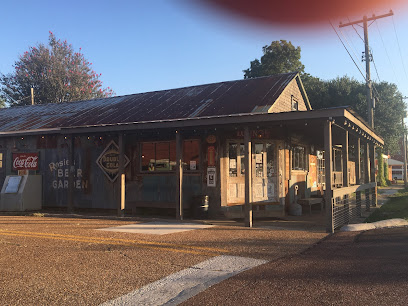
Castle Restaurant & Pub
Experience the exquisite flavors and historic charm of Castle Restaurant & Pub in Natchez, Mississippi, where every meal is a delightful journey.
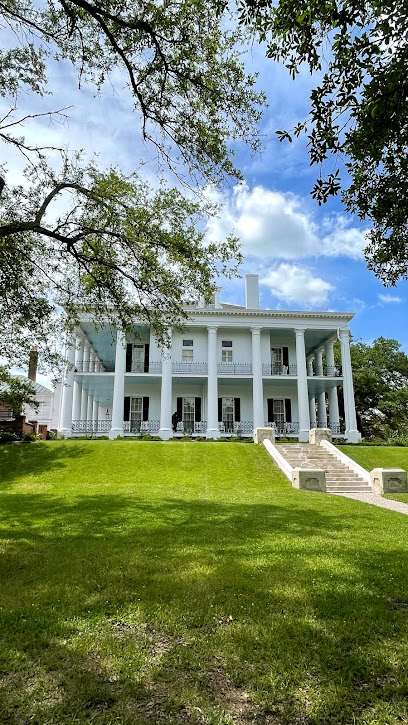
Restaurant 1818
Discover the best of American cuisine at Restaurant 1818 in Natchez, Mississippi, where every meal is a celebration of local flavors and culinary excellence.
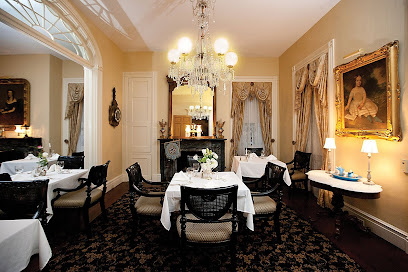
The Corner Bar
Experience the vibrant nightlife at The Corner Bar in Natchez, MS, where friendly service, refreshing drinks, and a welcoming atmosphere await.
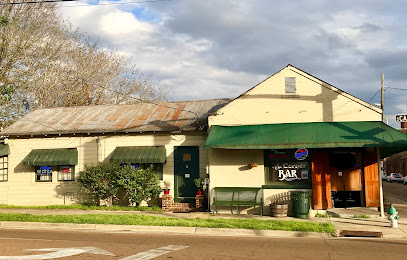
Andrew's Tavern-DiveBar
Discover the vibrant nightlife at Andrew's Tavern-DiveBar, where drinks flow and dance floors beckon in Natchez, Mississippi.
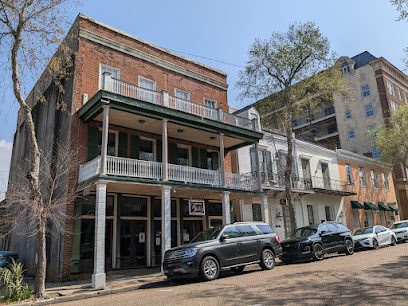
CR'S
Discover the charm of CR'S, a cozy bar in Natchez offering creative cocktails, local brews, and Southern hospitality in a welcoming atmosphere.
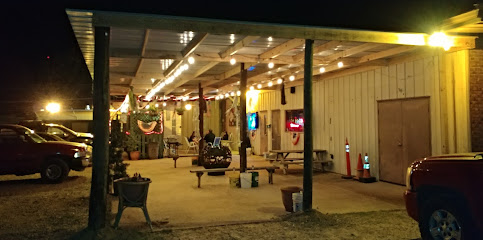
Bowie's Rabbit Hole
Discover Bowie’s Rabbit Hole in Natchez, MS - where delicious grilled dishes and a lively atmosphere come together for a memorable dining experience.
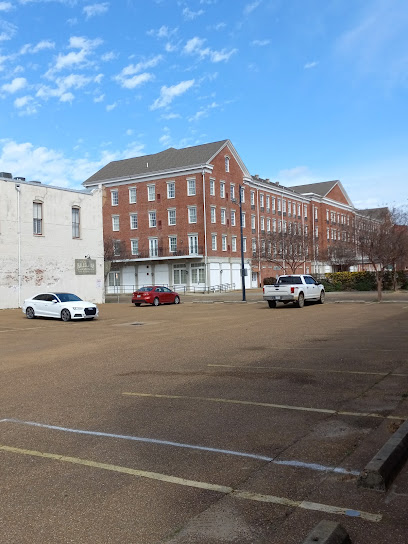
Local Phrases about Natchez National Historical Park
-
- HelloHowdy
[haʊ.di] - GoodbyeSee ya
[siː jə] - YesYup
[jʌp] - NoNah
[nɑː] - Please/You're welcomePlease/You're welcome
[pliːz/jʊr ˈwɛlkəm] - Thank youThank ya
[θæŋk jə] - Excuse me/Sorry 'Scuse me/Sorry
[ˈskjuːz mi/ˈsɔri] - How are you?How y'all doin'?
[haʊ jɔːl ˈduːɪn] - Fine. And you?Fine. And you?
[faɪn. ænd jə] - Do you speak English?Ya speak English?
[jə spiːk ˈɪŋɡlɪʃ] - I don't understandI don't get it
[aɪ doʊnt ˌəndərˈstænd]
- HelloHowdy
-
- I'd like to see the menu, pleaseI wanna check the menu, please
[aɪ ˈwɑnə tʃɛk ðə ˈmɛnjuː pliːz] - I don't eat meatI don't eat meat
[aɪ doʊnt iːt mit] - Cheers!Cheers!
[ʧɪrz] - I would like to pay, pleaseI need to settle up, please
[aɪ nid tu ˈsɛtl ʌp pliːz]
- I'd like to see the menu, pleaseI wanna check the menu, please
-
- Help!Help!
[hɛlp] - Go away!Get lost!
[ɡɛt lɔst] - Call the Police!Call the Cops!
[kɔl ðə kɑps] - Call a doctor!Get a Doc!
[ɡɛt ə dɑk] - I'm lostI'm turned around
[aɪm tɜrnd əˈraʊnd] - I'm illI'm feelin' sick
[aɪm ˈfilɪn sɪk]
- Help!Help!
-
- I'd like to buy...I wanna buy...
[aɪ ˈwɑnə baɪ] - I'm just lookingJust browsing
[ʤʌst ˈbraʊzɪŋ] - How much is it?How much for it?
[haʊ mʌʧ fɔr ɪt] - That's too expensiveThat's too pricey
[ðæts tuː ˈpraɪsi] - Can you lower the price?Can you do a deal?
[kæn jʊ duː ə dil]
- I'd like to buy...I wanna buy...
-
- What time is it?What's the time?
[wɑts ðə taɪm] - It's one o'clockIt's one
[ɪts wʌn] - Half past (10)Ten-thirty
[tɛn-ˈθɜrti] - MorningMornin'
[ˈmɔrnɪn] - AfternoonAfternoon
[ˌæftərˈnun] - EveningEvenin'
[ˈivnɪn] - YesterdayYest'day
[ˈjɛst.deɪ] - TodayToday
[təˈdeɪ] - TomorrowTomorra
[təˈmɔrə] - 1One
[wʌn] - 2Two
[tuː] - 3Three
[θriː] - 4Four
[fɔr] - 5Five
[faɪv] - 6Six
[sɪks] - 7Seven
[ˈsɛvən] - 8Eight
[eɪt] - 9Nine
[naɪn] - 10Ten
[tɛn]
- What time is it?What's the time?
-
- Where's a/the...?Where's the...?
[wɛərz ðə] - What's the address?What's the addy?
[wɑts ðə ˈædi] - Can you show me (on the map)?Can you point it out?
[kæn jʊ pɔɪnt ɪt aʊt] - When's the next (bus)?When's the next (bus)?
[wɛnz ðə nɛkst (bʌs)] - A ticket (to ....)A pass (to ....)
[eɪ ˈpæs (tʊ)]
- Where's a/the...?Where's the...?
History of Natchez National Historical Park
-
Long before European colonization, the Natchez people, a sophisticated society known for their mound-building, inhabited the area. They constructed large earthen mounds, such as the Grand Village, which served as both ceremonial centers and burial sites. The Natchez had a complex social structure and were known for their resistance to French colonization efforts in the early 18th century.
-
In the early 1700s, French colonists established Fort Rosalie in Natchez, which became a focal point of French expansion in the lower Mississippi Valley. The relationship between the French and the Natchez people was tumultuous, culminating in the Natchez Revolt of 1729. Following the French defeat, the Spanish took control of the area in 1763, leaving a legacy of architecture and culture that can still be seen in Natchez today.
-
Natchez thrived in the early 19th century as a center of cotton plantations, which relied heavily on enslaved African American labor. This period saw the construction of many grand antebellum mansions, such as Melrose Estate and the William Johnson House, which are now key attractions in the Natchez National Historical Park. These homes offer a glimpse into the opulence of the plantation era, as well as the harsh realities of slavery.
-
During the Civil War, Natchez was a strategic location for both Confederate and Union forces. The city was occupied by Union troops in 1863, which spared it from the widespread destruction experienced by many Southern cities. After the war, Natchez struggled during Reconstruction but gradually rebuilt its economy and infrastructure. The period also marked significant changes for African Americans in Natchez, with the end of slavery and the beginning of new social dynamics.
-
In the 20th century, efforts to preserve Natchez's rich history and architecture gained momentum. The establishment of the Natchez National Historical Park in 1988 was a pivotal moment in these preservation efforts. The park now encompasses several key historical sites, including the Melrose Estate, the William Johnson House, and the Fort Rosalie site. These sites serve as educational resources, offering visitors a detailed look at the city's complex history from pre-colonial times through the 19th century.
Natchez National Historical Park Essentials
-
Natchez National Historical Park is located in Natchez, Mississippi. The nearest major airport is Jackson-Evers International Airport in Jackson, approximately 115 miles away. From Jackson, you can rent a car or take a bus to Natchez, which generally takes around 2 hours by road. Alternatively, you can fly into Baton Rouge Metropolitan Airport, about 90 miles from Natchez, and then travel by car or bus.
-
Natchez is a relatively small city, and many of its attractions within the National Historical Park are accessible by foot. However, for more convenience, renting a car is recommended. Local taxi services and ridesharing options like Uber and Lyft are also available. For a more scenic experience, consider renting a bicycle to explore the area.
-
The official currency is the United States Dollar (USD). Credit and debit cards are widely accepted in most hotels, restaurants, and shops. ATMs are readily available throughout the city for cash withdrawals. It's advisable to carry some cash, especially if you plan to shop at smaller, local establishments that may not accept cards.
-
Natchez is generally considered a safe destination for tourists. However, like any travel destination, it is important to take standard precautions. Avoid walking alone at night in poorly lit areas and always keep an eye on your belongings in crowded places. Some neighborhoods in Natchez may have higher crime rates, so it is best to stay in well-populated and tourist-friendly areas.
-
In case of emergency, dial 911 for police, fire, or medical assistance. Natchez has a local police station and a hospital, Merit Health Natchez, for medical emergencies. It is advisable to have travel insurance that covers medical emergencies. Pharmacies are available for minor health issues and over-the-counter medications.
-
Fashion: Do dress comfortably and appropriately for the weather. Light, breathable clothing is recommended during summer months. Avoid overly casual attire if dining in upscale restaurants. Religion: Do be respectful when visiting religious sites. Avoid disruptive behavior and dress modestly. Public Transport: Do be polite and considerate to drivers and fellow passengers. Don't expect extensive public transport options; taxis or car rentals are more practical. Greetings: Do greet people with a friendly 'hello' or 'good morning.' A firm handshake is also appropriate. Eating & Drinking: Do try local Southern cuisine, including dishes like fried catfish and barbecue. Don't forget to tip your servers, generally 15-20% of the bill.
-
To experience Natchez like a local, visit the local farmers' markets for fresh produce and handmade goods. Engage with locals, who are often eager to share stories about the city's rich history and culture. Don't miss out on the annual Natchez Spring Pilgrimage, where you can tour historic homes and gardens. For a unique experience, take a riverboat cruise on the Mississippi River.
Nearby Cities to Natchez National Historical Park
-
Things To Do in McComb
-
Things To Do in Vicksburg
-
Things To Do in Baton Rouge
-
Things To Do in Monroe
-
Things To Do in Lafayette
-
Things To Do in Hattiesburg
-
Things To Do in Slidell
-
Things To Do in New Orleans
-
Things To Do in Lake Charles
-
Things To Do in Houma
-
Things To Do in Shreveport
-
Things To Do in Greenwood
-
Things To Do in Gulfport
-
Things To Do in Meridian
-
Things To Do in Biloxi








